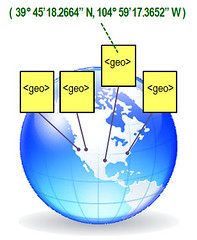Simba Information has released a report on the state of the yellow pages industry entitled “The RBOC Bankruptcies 2009: The Impact on the Future of the Yellow Pages Industry” and will offer a webinar this week to those who bought it. At $995, I think the report is likely overpriced, and I thought I’d save you some money if you were tempted to pay that much to find out why some of the major yellow pages publishers are filing for Chapter 11 bankruptcy protection, what this means for the industry, and where things are headed.
I guess I’m reacting to the somewhat hyperbolic language found in the press release which I think was intended to appeal to fears of yellow pages publishers — possibly the very people who should least afford to pay this much for the analysts’ report.
First of all, I think it’s a stretch to refer to Idearc and R.H. Donnelley as RBOCs. Since Idearc was separated from the telco function of Verizon and then spun off, I don’t believe people really consider it to be an RBOC any longer. I don’t think R.H. Donnelley could ever have been considered an RBOC, even though it acquired directory parts of old RBOC companies. “RBOC” refers to “Regional Bell Operating Company”, used to describe those companies which originally made up the American Telephone & Telegraph Company, earlier known as Bell Telephone Company, which were broken apart into separate regional companies as part of antitrust requirements. The main focus of the original splintering of the RBOCs was placed upon the phone services, and the general convention is to consider those telco functions as being the “phone company”, while when non-telco company portions are spun off, they are no longer refered to as “RBOC”. This is maybe pedantic of me, but I think such loose accuracy of description is inauspicious in an expert report.
Secondly, there’s not a whole lot of mystery about why Idearc and RHD got into financial straights and had to file for Chapter 11. Both were overly debt-heavy and when the economy turned sour, they could not properly service those debts. I wrote in-depth about Idearc’s case in a post on Search Engine Land originally titled “Idearc’s Chapter 11 Bankruptcy: Who’s Really Responsible?“, and you can see Bloomberg’s and other reports stating that R.H.Donnelley’s bankruptcy was due to overly high debt. Yell Group’s problems also stem from debt. Ambassador Media Group, another well-known yellow pages publisher, has also filed for bankruptcy protection this week as well.
So, let me save you a thousand dollars with the simple explanation of this. For a hundred years, the print yellow pages industry was a very profitable business. It was a very safe bet, as investments go. Such a long-standing business model, “ecologically adapted” to be interdependent with many other businesses, was simply not expected to see any major declines. However, the technological disrupters of first the internet, then Pay-Per-Click advertising, and then the Google search engine — all had a very unforeseen effect. These companies increased capital investment, expecting longterm wins, but the rapid erosion of print advertising undermined their ability to pay on their loans quickly enough. Even though there’s increasing profitability on the part of their internet sides in many cases, the volume of internet profit is insufficient to both cancel out the losses in print revenue and simultaneously pay off their loans. In Idearc’s case, I further outlined how they were sandbagged from the very beginning by Verizon offloading an unreasonable debt load upon them.
What does the future hold for Yellow Pages?
Immediately, these companies which are restructuring will come out far stronger. They will be forced to further pare down their print divisions. Print will continue to see erosion in revenues, since overall usage is declining, just as it is with other print media (I solidly established that the yellow pages industry’s own statistical projections were considerably inaccurate, and that print directory usage likely continues to drop each year).
I’ve also been stating for quite some time that there appear to be too many players in the internet yellow pages (IYP) sector, and that I foresee collapsing of this is likely — we can expect that there are likely to be some mergers of these companies in the near future.
There is also further weakening of these online directories in terms of marketshare from my perspective. For now, they can be profitable, but I see too much incestuous interselling among the players. It’s possible that once collapse within this sector occurs, that the resultant players left standing may be strong enough to continue competing and to grow. But, there is significant cause to be concerned with the growing local search marketshare taken over by the major search engines such as Google. If the IYPs cannot improve their game well enough and rapidly enough to compete with the major search engines, then there will continue to be financial instability on the parts of the yellow pages companies.
Simba’s press release mentions in passing how “…bloggers jump to their computer keyboard and pound out a call for the outright ban of books for the good of the people whether they want them or not and toss in the good of the environment as well…” — wording that plays very well to those in the YP industry which have been very defensive about the attacks on the printed books. Yet, rather than playing up to the anti-environmentalist defensiveness of the YP industry, it’d probably be more productive to resolutely face into the difficult current truths. People who don’t use the printed media are increasingly irritated by having the books from multiple providers dropped unsolicited on their doorsteps these days, and environmental progressivism is a popular and rising trend, turning mild irritation into full-frontal attacks. It’s undeniable that in quite a number of markets throughout the U.S. there have been significant movements to restrict directory distribution. Quite simply, this trend is going to continue, and the industry’s thin bandaids in many cases are not going to perform well at resisting the attitudinal change.
Finally, why should you trust my analysis more than Simba’s (even though I’m saving you the thousand dollars)?
For one thing, I was one of the earliest analysts to state that I saw weakness in the yellow pages industry, and later that there were serious problems in store for yellow pages. There were quite a number of other research firms and analysts that cater to the yellow pages industry that were offended back then by my findings, but it’s now undeniable that print yellow pages have indeed experienced substantial declines. I forecast the decline, I warned of weakening in print, and I stated it out loud, even as other major analysts were dismissive and even angrily reactive. I simply observe the facts and attempt to project realistic possibilities rather than merely catering to popular notions — I’m not afraid to speak the whole truth as I see it.
Interestingly enough, AT&T’s directory division hasn’t been experiencing the same degree of problems seen by other directory publishers, but they’ve been kept “within the fold” of the overall AT&T telco corporation, which can insulate them from problems experienced by the standalone directory companies. Simba’s webinar is including Frank Jules, AT&T’s president & CEO of Advertising Solutions, but I’m not at all convinced that AT&T’s yellow pages group will be all that informative beyond speaking to their directory products offered.
As I pointed out in my article showing weakening in online searches for the “yellow pages” keyword phrase, online consumers appear to be seeking out yellow pages sites less and less. It stands to reason that as Google’s blended search bubbles up local businesses to user keyword search requests more simply, there’s less reason for those consumers to be seeking out business directories. The younger generation is forgetting what a “yellow pages” is altogether, and sites like AT&T’s Yellowpages.com which have placed all their branding around the eroding concept will stand to lose out.
Simba’s report undoubtedly will have some good information in it. But, will it really be worth a thousand dollars? I seriously doubt it. If you’ve read my blog post here, I think you can safely save yourself the cost.





